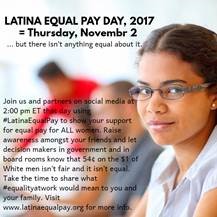

Conducting pay equity audits to identify and address any pay disparities within an organization.What Can be Done to Close the Gender Wage Gap:Ĭlosing the gender wage gap requires a multifaceted approach that addresses the various factors that contribute to the gap. This would not only benefit women and their families but would also stimulate economic growth and job creation. economy and increase the annual earnings of women by $6,353 on average. Studies have shown that closing the gender pay gap would boost the economy and increase household incomes.Īccording to a report by the Institute for Women's Policy Research, closing the gender wage gap would add $512.6 billion to the U.S. The Economic Benefits of Closing the Gender Wage Gap:Ĭlosing the gender wage gap is not only a matter of fairness and equality, but it also has significant economic benefits. Other factors that contribute to the gender wage gap include discrimination, negotiation and communication styles, and the lack of affordable and accessible childcare. Studies have shown that mothers are often perceived as less committed to their careers and are penalized with lower salaries and fewer promotions. One major factor is occupational segregation, which refers to the tendency for women to be concentrated in lower-paying occupations such as childcare, retail, and food service, while men are overrepresented in higher-paying fields such as engineering, finance, and technology.Īnother factor is the motherhood penalty, which refers to the lower earnings and limited career opportunities that many women experience after becoming mothers. There are several factors that contribute to the gender wage gap.


Even in female-dominated industries such as healthcare and education, women earn less than men in equivalent positions. The gender wage gap exists in virtually every occupation, from entry-level positions to the highest-paying jobs. Latina women fare even worse, earning only 55 cents for every dollar earned by white, non-Hispanic men. Black women, for example, earn only 63 cents for every dollar earned by white, non-Hispanic men. The wage gap is even wider for women of color. This wage gap has persisted for decades, despite the fact that women are now more educated than ever before and have entered the workforce in large numbers. This day serves as a reminder that despite the progress made towards gender equality, there is still much work to be done to close the gender wage gap.Īccording to the National Women's Law Center, on average, women in the United States earn only 82 cents for every dollar earned by men. In the United States, Equal Pay Day is typically observed in April, but the exact date varies depending on the wage gap in each state. Despite progress made in recent years, the statistics show that there is still a long way to go.Įqual Pay Day is a symbolic day that represents how far into the year women must work to earn the same amount that men earned in the previous year.

Today is Equal Pay Day, a reminder that the gender pay gap still exists, and that women are being paid less than their male counterparts for doing the same job.


 0 kommentar(er)
0 kommentar(er)
